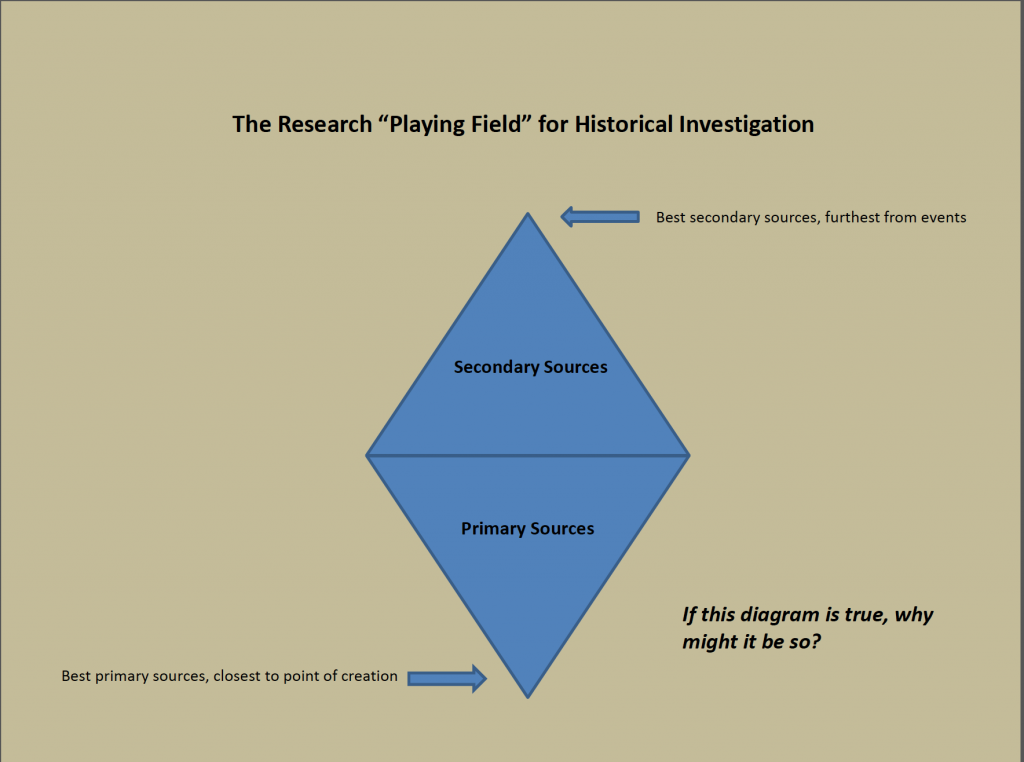“Every historian, regardless of specialty, must regard sources as windows, remembering to look at the window as well as through the window. No window is wholly transparent, and without understanding the way a source frames the view and distorts the light, we cannot trust our eyes.” –Zachary Schrag, Princeton Guide, p. 107
Essential Question
How might economic and political power shape our understanding of historical sources?
Categories of Sources
- Primary
- Secondary
- Tertiary
Discussion Questions
- Do sources ever cross or overlap into various categories?
- Why are some sources better than others?
The Research Playing Field
Aspiring historians learn to distinguish primary and secondary sources along a kind of baseball diamond.
This field illustrates a key insight. Primary sources are almost always most reliable the closer they are to the point of creation, but secondary sources tend to become more useful the further they are away from events. In both cases, it is a question of distance. Proximity correlates with truth in first-hand evidence, but the passage of time helps encourage broader perspective in the development of secondary sources.
Tertiary Sources
Tertiary means third in order. Tertiary sources (also called reference sources) generally compile or summarize other sources, typically secondary sources. Wikipedia is the world’s most accessible and popular tertiary source. Almanacs, databases (like JSTOR), and dictionaries are types of reference or tertiary sources. These sources have great utility for historical researchers but they can be abused and can suffer from faulty design. Check out the link below for an argument among leading historians over Wikipedia’s approach to presenting historical information.
